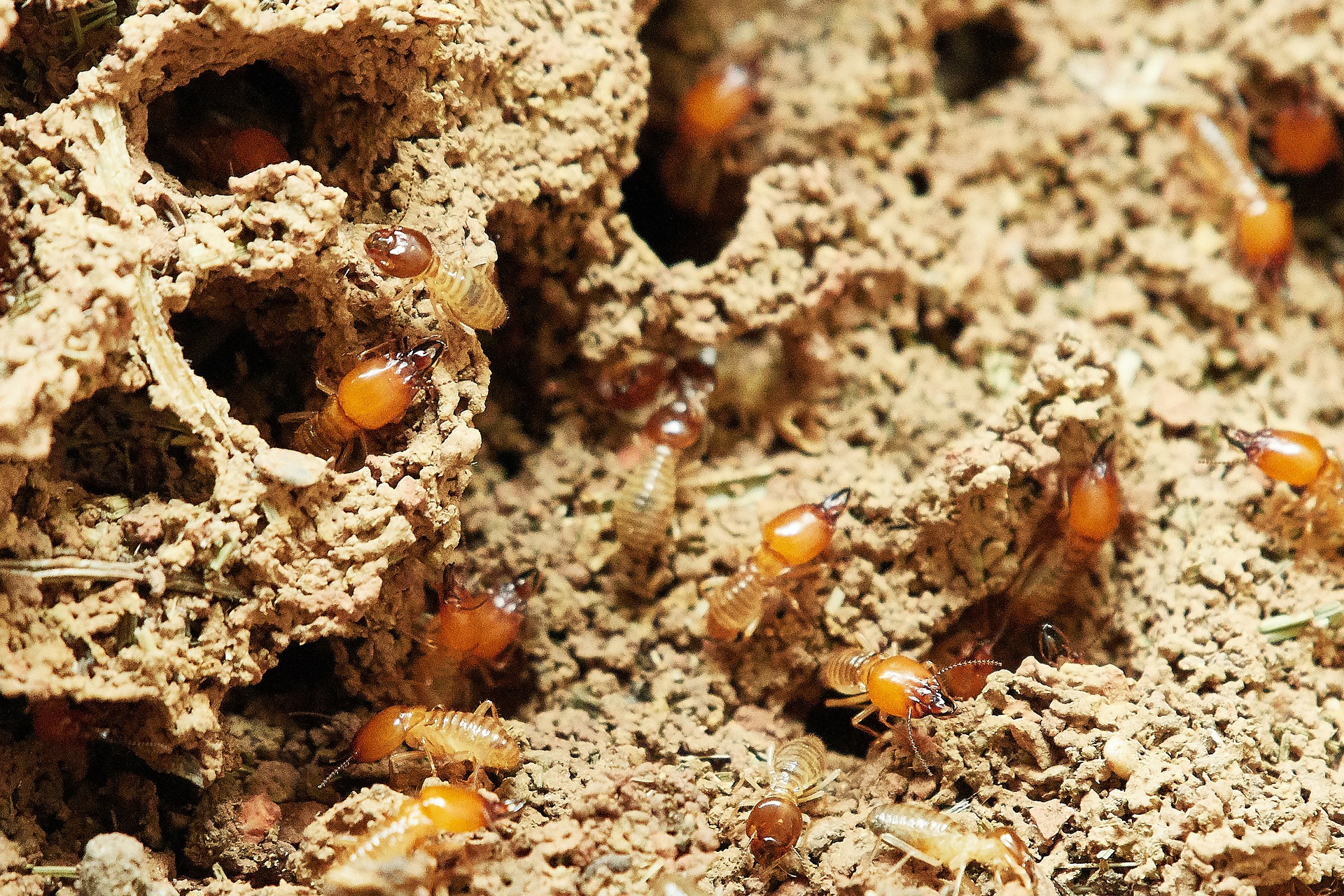There’s nothing like that sinking feeling in your gut when you realize your house may have a termite infestation. The first question that springs to the minds of most homeowners is, “Do I really have a termite infestation?” Followed by, “How bad is it?”
If any of the signs discussed here are visible around your house and property, please schedule an inspection with us so that we can begin a treatment immediately and then take the necessary steps to prevent termites from returning in the future.
While termites are a necessary part of most ecosystems—they break down dead wood and keep forested areas clean of debris—they’re very much a pest when they enter our homes. They can cause costly damage that’s very difficult to repair.
Let’s discuss how you can determine if these industrious insects have made a nest in your house. (Fingers-crossed they haven’t!)
Mud Tubes Leading from the Ground up the Foundation
In a number of ways, mud makes an appearance wherever termites are. One of the most common is a trail of mud running from the ground up the foundation wall, the inner foundation wall, or anything under the house such as support piers or plumbing structures.
If you encounter a mud trail like this, break a section of the mud tube and watch for a few days to see if a termite appears to repair it or check on it—they hate the exposure to air and will work quickly to patch it up. If it’s repaired over the following days or you see a termite come to check it out, then you’ve got an infestation.
Please note that breaking up these mud structures won’t get rid of the termites.
There are other muddy indications that a building is infested—for example, spots of dried mud about the size of a jewelry bead on an outside or inside wall. These are known as termite pinholes. If you brush the mud off and there’s a hole underneath, watch to see if a termite comes to fix it. If it’s patched up over the following days, again, bring in a professional.
Other misshapen patches or streaks of mud on walls inside or outside can also be signs of a termite infestation.
Swarmers and Dropped Wings Show Up on Your Property
When termites are getting ready to leave their nest to go build a new one somewhere else, they’re known as swarmers. These guys will leave the nest and head out in search of a new site to build a colony.
Often there will be multiple dead swarmers in window sills and in other areas where they’re trying to get outside. If you see one or two on your property or in your house, it’s time to get an inspection. Seeing swarmers like this can mean that the infestation is a big one—it takes several years for a colony to get big enough to begin producing swarmers.
Termites Have Been Spotted Near Your House
Depending on the distance from your house, this could be fine. If they’re in the forest and they’re over twenty-five feet from your house, it’s likely ok—we rely on forest termites to help recycle dead wood.
But it’s not a bad idea to have your home checked officially with a professional to put your mind at ease.
Structural Damage of Various Types
Damaged drywall, peeling paint, sagging floors, buckling wood or laminate floorboards, unreasonably squeaky floorboards, damaged wood, and maze-like patterns in furniture, floorboards, or walls can all be signs of a termite infestation.
One or more of these could indicate that you’re dealing with an unseen insect force in your home. We always recommend regular termite inspections, but if you haven’t had one in a while (or don’t know when the last one was done), get on our books so that we can help you rule out the possibility of termites.
Piles of Small Pellets in Your House
Termites get rid of their poop in the ever-so efficient way of pushing it out of their galleries and shelter tubes. This is a small pellet with six sides. You might run into these on the floor or a countertop. Seeing one in your house definitely indicates an infestation.
Finally, we always stress that even if you don’t see any of these signs in your home, that may not mean you’re in the clear. The best way to ensure that you don’t have a hidden termite infestation is through practicing preventative measures. The best way to do this? With an expert and thorough annual termite inspections.
So, please contact us for all your Seattle pest control needs.
Source: http://extension.msstate.edu/content/signs-termite-infestation



